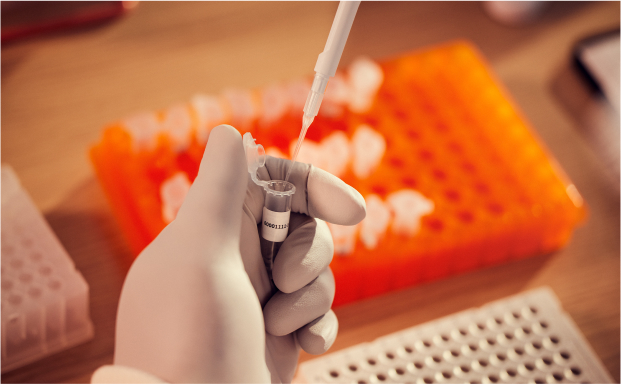Metatranscriptomic analysis of the skin and gut microbiomes
Discussion of the shift from using metagenomics to metatranscriptomics to understand the pathways driving health.
Unraveling gene expression in microbial populations with the power of NGS
Metatranscriptomics is the collective study of expressed mRNA from complex microbial communities.1 Using metatranscriptome sequencing to study gene expression in a microbial population, researchers can gain important insights on how microbes respond to a given environment at a specific time. Sequencing RNA from microbiomes can reveal not only which microbes are present, but also their functional activities.

Powered by next-generation sequencing (NGS) technologies, metatranscriptomics is a research field that spans diverse applications in agriculture, biotechnology, medicine, and more.1-4 In addition to providing data about a complex microbial community’s behavior and function, metatranscriptome sequencing can also provide valuable information about the community's environment or host.
Given the vast number (millions) of genes whose regulatory systems are not yet understood, metatranscriptomics is poised to make critical biological insights at the community level from native environments.
Take the guesswork out of your next workflow. The NGS Workflow Finder provides personalized solution recommendations and resources so you can sequence with confidence.
Discussion of the shift from using metagenomics to metatranscriptomics to understand the pathways driving health.
Learn how to enable sensitive profiling of microbial diversity and metabolic activity with RiboZero Plus Microbiome in this presentation from Drs. Scott Kuersten and Brice Le François.
Dr. Stefan Green addresses high-host and low microbial biomass issues, PCR-amplification bias, and alternatives for analyzing complex microbial communities.
See how Diversigen and DNA Genotek scientists developed workflows for metatranscriptomic studies and read their views about this research area’s potentially impactful future.
Read how researchers used metatranscriptomics to learn about metabolically active microbial communities for biogas plants.
Explore the role metatranscriptomics played in revealing what turned out to be a stunningly vast world for RNA viruses.
Learn how investigators used metatranscriptomics to shed light on the abudance and diversity of RNA viruses within the human pulmonary virome.
See how this study provided a comprehensive phylogeny of rhabdoviruses to better understand their shared evolutionary relationships with plants.
This paper uncovers the phylogenetic and functional diversity of microbial communities under the Antarctic ice shelf.
Read how scientists used metatranscriptomics to detect, track, and identify biomarkers of SARS-CoV-2 and how the virus can affect the respiratory microbiome.
Illumina Stranded Total RNA Prep with Ligation, Ribo-Zero Plus Microbiome
Streamlined RNA-Seq solution for clear and comprehensive analysis across the coding and non-coding transcriptome with exceptional study flexibility.
Our fastest, simplest benchtop system for metatranscriptomics research.
Empower discoveries with a comprehensive workflow from start to finish.
Achieve extraordinary throughput and accuracy to perform data-intensive applications at production scale.
BaseSpace Microbiome Metatranscriptomics
Perform taxonomic and pathway enrichment analysis on metagenomic samples.
Learn how to optimize an RNA sequencing workflow for complex microbial samples, with details on library preparation, sequencing, and using an intuitive software for metatranscriptomic analysis with Illumina Ribo-Zero Plus Microbiome. Download this application note and begin focusing on high-value portions of the transcriptome to understand the role of the microbiome in health and disease.
Metagenomics is the study of all the genes found within a microbial population sample.5 In contrast, metatranscriptomics is the study of expressed genes, or the transcriptome, of a population.1
16S rRNA sequencing is a specific method that targets the 16S rRNA gene, which is only found in prokaryotes (ie, bacteria and archaea).6 Unlike metatranscriptomics or metagenomics, 16S rRNA sequencing cannot detect other microbes such as viruses and fungi. Although this method is not as susceptible to host DNA contamination, it is limited in detecting functional information and identifying strains/variants compared to metatranscriptomic or metagenomic sequencing methods.
RNA extraction can be achieved using commercially available microbiome RNA extraction kits that provide an RNA Integrity Number (RIN) that's greater than or equal to 5.
The BaseSpace Microbiome Metatranscriptomics app is included with the Ribo-Zero Plus Microbiome Depletion Kit and offers bioinformatics tools to perform comprehensive metatranscriptome analyses.
Read how whole-genome shotgun sequencing and transcriptomics provide researchers with data to refine drug discovery and development.
Questions on starting metatranscriptomics studies in your lab?
Your email address is never shared with third parties.
References